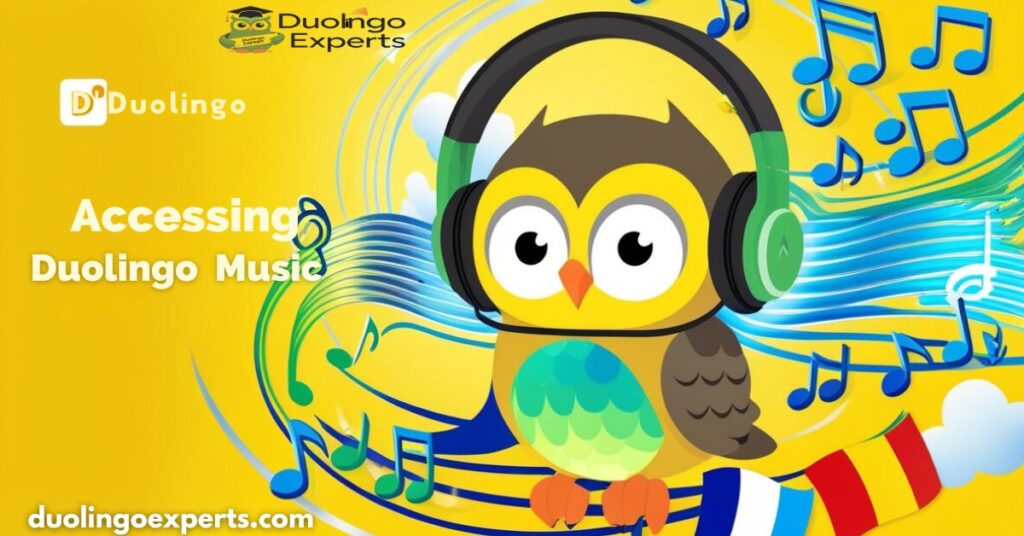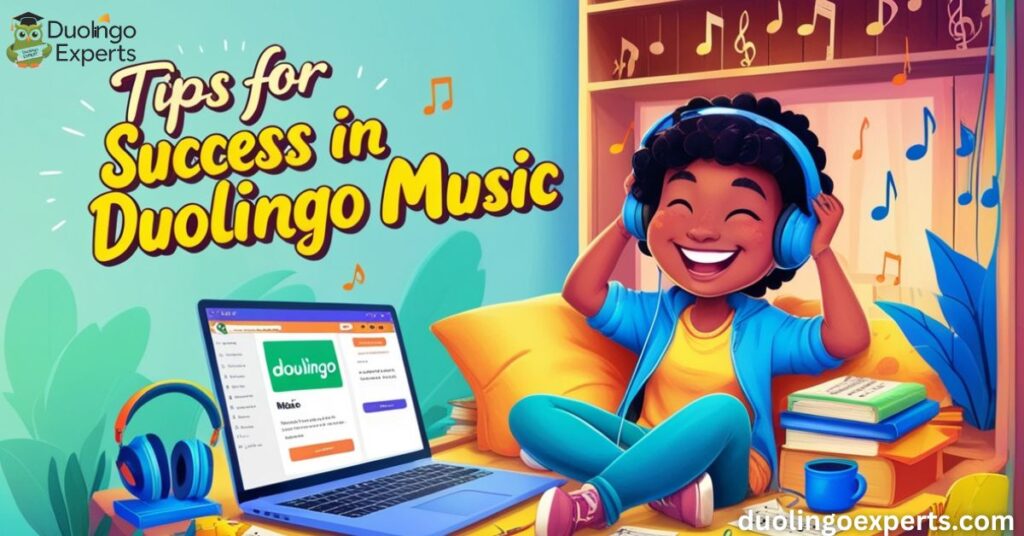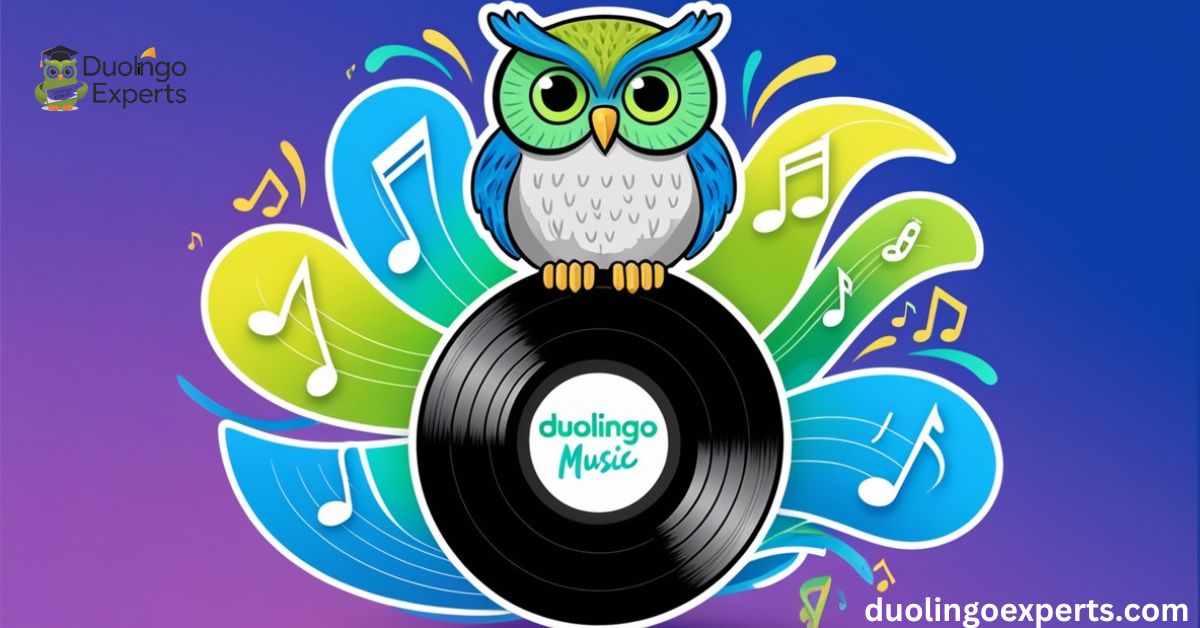In recent years, Duolingo has transformed the way we approach language learning. By combining interactive features with gamification, Duolingo turned what used to be a tedious process into a fun, engaging experience. Now, Duolingo has taken a bold step into the world of music education with the launch of Duolingo Music, a new platform designed to make learning music as enjoyable and accessible as learning a language.
Whether you’re a total beginner or have some experience, this app offers a unique way to enhance your music literacy, practice reading sheet music, and even learn piano basics using a virtual piano keyboard.
In this guide, we will walk you through how to get Duolingo Music, what features it offers, how to use the app, and how you can maximize your learning experience. So, let’s dive into this exciting new way to learn music online!
What is Duolingo Music?
Duolingo Music is a brand-new music education app from Duolingo, the popular platform that has helped millions of people learn languages. Known for its engaging, game-like design, Duolingo has adapted this model to music education to help beginners build a strong foundation in music theory, note recognition, and basic piano skills.
The app aims to make music education more accessible by offering a free music education platform that’s available on mobile devices. Whether you want to learn how to read sheet music, improve your rhythm, or practice your piano notes, Duolingo Music breaks down each skill into bite-sized lessons that you can complete at your own pace.
Duolingo Music is particularly notable for its focus on gamification. Much like learning a new language, users can progress through levels, earn points, and receive rewards, making the process of learning music feel less like a chore and more like a game.
Features of Duolingo Music
One of the main reasons Duolingo Music is so popular among learners is its unique set of features that make music education enjoyable and effective. Let’s take a look at some of the most important features:
1. Gamified Music Learning
Duolingo Music brings the same gamified music learning system that Duolingo uses for language learning. You’ll work through interactive lessons, unlock new levels, and earn points as you make progress. Each lesson is short and engaging, making it easy to stay motivated as you go.
2. Bite-Sized Lessons
Learning music with Duolingo Music is designed to be simple and manageable. Each lesson is small and focused on a particular skill—such as note recognition, rhythm exercises, or learning how to read sheet music—so you don’t feel overwhelmed. These bite-sized lessons are perfect for those who are just starting their musical journey or even for more experienced musicians who want to brush up on their skills.
3. Virtual Piano Keyboard
Duolingo Music incorporates a virtual piano keyboard to help you practice piano notes directly on your mobile device. This is a great feature for those who don’t have access to a piano or keyboard but still want to practice the basics of piano music. The virtual keyboard provides an interactive way to learn how to play notes and melodies, helping you build muscle memory and develop your musical ear.
4. Interactive Exercises
Instead of just reading lessons or watching videos, Duolingo Music emphasizes hands-on learning with interactive music exercises. These exercises help you actively engage with the material, whether it’s identifying notes on a staff, practicing rhythm timing, or playing a melody using the virtual piano. The interactive exercises keep you immersed in the learning process, making it more enjoyable and effective.
5. Progress Tracking
To keep you motivated, Duolingo Music includes features for tracking your progress. You can monitor how far you’ve come in the app, which lessons you’ve completed, and where you need more practice. The app also provides reminders and notifications to keep you on track with your learning journey.
6. Free Music Education
One of the best aspects of Duolingo Music is that it is completely free. There’s no need to worry about expensive music lessons or subscriptions. This accessibility makes it easier for anyone to start learning music, regardless of financial situation. Duolingo’s commitment to democratizing music education ensures that anyone with a smartphone or tablet can begin their musical education.
Accessing Duolingo Music

Getting started with Duolingo Music is straightforward, but there are a few steps you need to follow to ensure you’re set up properly. Here’s how to access the app and begin your musical journey:
Step 1: Download the Duolingo App
To access Duolingo Music, you first need to download the Duolingo app from the App Store (for iOS) or Google Play Store (for Android). Duolingo Music is integrated into the main Duolingo app, so there’s no need to download a separate app.
Step 2: Join the Duolingo Waitlist (If Applicable)
At the time of its release, Duolingo Music was gradually rolled out to different regions. If you live in a country where the app isn’t available yet, you can join the Duolingo waitlist. By joining the waitlist, you’ll receive an email or notification when Duolingo Music is officially available in your country. This step ensures you don’t miss out on the opportunity to use the app once it becomes accessible to you.
Step 3: Sign In to Your Duolingo Account
If you already have a Duolingo account for language learning, you can sign in with your existing credentials. If you’re new to Duolingo, you’ll need to create an account. Signing in allows you to track your progress across devices and ensures that your musical learning journey is saved.
Step 4: Start Learning
Once you’ve logged in and Duolingo Music is available in your region, you can start learning right away! The app will present you with beginner-friendly lessons on note recognition, rhythm, and reading sheet music. As you progress, you’ll unlock more advanced topics and lessons.
Device and Language Requirements
Duolingo Music is designed to work on both iOS and Android devices. However, there are certain device requirements for both platforms:
- iOS Devices: Duolingo Music is available on iPhones, iPads, and iPod Touch devices running iOS 16 or higher.
- Android Devices: The app is compatible with Android devices running Android 7.0 (Nougat) or higher.
At the moment, Duolingo Music is available in English. However, Duolingo frequently expands its offerings, so it’s possible that future updates will include additional language options like Spanish, French, and others.
Course Structure and Content
Duolingo Music’s course structure is designed to help you learn music step by step. Whether you’re learning to play the piano, read sheet music, or understand basic music theory, the course offers a balanced approach to learning. Here’s a breakdown of what you’ll learn in the Duolingo Music course:
1. Note Recognition
The first thing you’ll focus on is note recognition. Understanding how to read notes on a staff is the foundation of music education. Duolingo Music will introduce you to different notes and their placements on the staff, which is essential for learning to read sheet music.
2. Reading Sheet Music
Once you’re comfortable with note recognition, Duolingo Music moves on to reading sheet music. This skill is vital for playing any instrument, especially the piano. Duolingo Music offers interactive exercises to help you read and interpret sheet music, teaching you how to recognize notes and rhythms in context.
3. Rhythm and Timing Exercises
Music isn’t just about reading notes—it’s also about timing and rhythm. Duolingo Music incorporates a variety of rhythm training exercises to help you develop a solid sense of timing. These exercises ensure that you not only understand how to read music but can also play it correctly.
4. Piano Notes Learning
For beginners interested in learning piano, Duolingo Music includes a virtual piano keyboard. This allows you to practice piano notes and melodies directly on your device. The virtual keyboard is a great alternative for those who don’t have access to a piano or keyboard.
5. Basic Music Theory
Duolingo Music introduces you to the basics of music theory—the foundation of understanding how music works. You’ll learn about scales, intervals, and chords, and how they fit together to form melodies and harmonies.
What You’ll Learn in Duolingo Music
Duolingo Music offers a comprehensive approach to learning music. Here’s an overview of the key topics and skills you’ll learn:
- Note Recognition: Identify notes on a staff.
- Reading Sheet Music: Understand how to read music notation and interpret different symbols.
- Rhythm and Timing: Learn how to keep time and play music at the correct tempo.
- Piano Basics: Use the virtual piano keyboard to practice notes and melodies.
- Music Theory: Learn the fundamentals of music theory, such as scales, intervals, and chords.
Progression Through the Course
Duolingo Music uses a structured approach to learning, which means you’ll progress through the app step by step. As you complete each lesson, the app assesses your understanding and adjusts the difficulty of subsequent lessons based on your performance. This ensures that you are always challenged, but not overwhelmed.
Levels and Rewards
Just like Duolingo’s language learning platform, Duolingo Music includes a series of levels and rewards that help keep you motivated. As you complete lessons and exercises, you’ll earn points, unlock new content, and receive badges or rewards. These rewards are designed to give you a sense of achievement and make the learning process more enjoyable.
Each lesson is structured with clear objectives, such as mastering a set of notes or understanding a specific rhythm. When you finish a lesson, you’ll be able to see your progress in terms of how well you’ve grasped each concept, making it easy to track your improvements over time.
Getting Started with Duolingo Music
If you’re ready to dive into Duolingo Music, here’s a step-by-step guide on how to get started:
- Sign Up or Log In: Start by creating a Duolingo account if you don’t already have one. You can use your existing Duolingo language account to sign in.
- Choose Your Music Course: After logging in, navigate to Duolingo Music and choose the course you want to take. For beginners, it’s best to start with the basics, such as note recognition and rhythm exercises.
- Complete Lessons: Begin by completing the first set of lessons. Don’t worry if you make mistakes—that’s part of the learning process! Duolingo Music will guide you through the exercises, giving feedback to help you improve.
- Practice Consistently: Dedicate a little time each day to practicing. Consistency is key in building music skills, just as it is in learning a new language. Set aside 10-15 minutes a day to complete your Duolingo Music lessons.
Tips for Success in Duolingo Music

To get the most out of Duolingo Music, consider these tips:
Set Realistic Goals
When you’re starting your musical journey, it’s important to set achievable goals. Start by aiming to complete one lesson each day. As you get more comfortable with the app, you can increase your learning time or set more ambitious goals, like mastering a particular piece of music.
Use the Virtual Piano Keyboard
The virtual piano keyboard is one of the best tools Duolingo Music offers, especially for beginners. Don’t be afraid to spend time practicing piano notes and melodies using the keyboard. It’s a great way to reinforce what you’ve learned without needing a physical instrument.
Track Your Progress
Duolingo Music allows you to monitor your progress as you go. Take advantage of this feature by reviewing your achievements and setting new goals for yourself. Tracking your progress will help you stay motivated and see how far you’ve come.
Practice Rhythm and Timing
One of the most important aspects of music is timing. Make sure you dedicate time to rhythm training exercises to improve your timing. The app offers various exercises to help you develop a sense of rhythm, which will be essential for playing music correctly.
Engage with the Community
Duolingo has a large and active community, and Duolingo Music is no exception. Join online forums, discussion groups, or social media communities where you can connect with other learners. Sharing experiences, asking questions, and learning from others can make the process more fun and engaging.
Duolingo Music vs. Traditional Music Lessons
Duolingo Music offers a very different experience compared to traditional music lessons. Here’s a breakdown of how the two compare:
Duolingo Music
- Affordability: Duolingo Music is free, making it an excellent option for those on a budget.
- Flexibility: With Duolingo Music, you can learn at your own pace, anytime and anywhere.
- Gamification: The app’s gamified approach makes learning music enjoyable and rewarding.
- No Pressure: There’s no teacher pushing you to meet a deadline. You can take as much time as you need to master each concept.
Traditional Music Lessons
- Cost: Traditional lessons can be expensive, with rates varying depending on the teacher and location.
- One-on-One Instruction: You’ll get personalized feedback from a teacher who can guide you through more complex concepts.
- Set Schedule: Traditional lessons usually require you to adhere to a fixed schedule, which might not be convenient for everyone.
- In-Person Experience: If you prefer in-person interaction, traditional lessons offer that human connection.
While traditional lessons offer more individualized feedback, Duolingo Music is a great alternative for those who want to learn at their own pace without the financial commitment.
Duolingo Music vs. Other Music Learning Apps
There are many music apps available today, so how does Duolingo Music compare? Let’s look at how it stacks up against other popular music apps for iOS and Android:
Duolingo Music vs. Simply Piano
Simply Piano is a popular app designed to teach piano. It also uses a step-by-step approach, but it’s mainly focused on learning the piano specifically.
- Price: Simply Piano requires a paid subscription for full access, while Duolingo Music is free.
- Focus: Simply Piano is more focused on learning piano specifically, while Duolingo Music covers a broader range of music theory and general skills.
Duolingo Music vs. Yousician
Yousician offers a range of lessons for various instruments, including guitar, piano, and ukulele. Like Duolingo Music, it offers a gamified learning system.
- Pricing: Yousician offers a free version, but to access full content, you’ll need to subscribe.
- Learning Style: Yousician has a more structured approach, while Duolingo Music’s lessons are more interactive and flexible.
Duolingo Music vs. Music Theory for Musicians
While Music Theory for Musicians is an excellent app for learning music theory basics, it lacks the interactive exercises that Duolingo Music offers. Duolingo’s focus on gamification and interactive music lessons makes it more engaging, especially for beginners.
Duolingo Music vs. Flowkey
Flowkey is another piano-focused app with a paid subscription model. It is great for piano learners who want to focus on playing specific pieces.
- Cost: Flowkey is paid, while Duolingo Music is free.
- Lesson Approach: Flowkey focuses on learning songs, while Duolingo Music focuses on learning music theory, note recognition, and rhythm.
Integrating Duolingo Music with Instrument Practice
If you already play an instrument or are learning one, Duolingo Music can be an excellent supplement to your practice. Here’s how you can integrate Duolingo Music into your regular music practice:
1. Use Duolingo Music for Music Theory
If you already play the piano, guitar, or another instrument, Duolingo Music can help you reinforce your understanding of music theory and note recognition. Practice your rhythm and timing with the app, and apply what you’ve learned to your instrument.
2. Practice Songs After Learning Basic Notes
Once you’ve learned how to recognize notes and read sheet music, try playing songs on your instrument that incorporate those skills. Use Duolingo Music to practice specific musical techniques, then apply them to songs you love.
3. Master New Skills with Interactive Exercises
Duolingo Music’s interactive features can help you improve specific skills, such as timing and note accuracy. Focus on practicing exercises you find challenging, and transfer those skills directly to your instrument.
Troubleshooting Common Issues and Solutions
Sometimes, you might run into issues while using Duolingo Music. Here are some common problems and their solutions:
1. Problem: The App Isn’t Loading
Solution: Make sure your device is updated to the latest software version. If you’re on iOS, ensure you’re using iOS 16 or higher. Restart the app or reinstall it if the issue persists.
2. Problem: Audio Issues
Solution: Check your device’s volume settings and ensure that the app has permission to play sound. If you’re using Bluetooth headphones, make sure they are properly connected.
3. Problem: Not Getting Progress Updates
Solution: Make sure you’re connected to the internet so that your progress can sync. You may need to update the app for the latest features.
Frequently Asked Questions
Is Duolingo music available?
Yes, Duolingo Music is available, but its availability may vary by country. You can check the app store for updates or join the Duolingo waitlist for the latest release information.
How do I enable music on Duolingo?
To enable Duolingo Music, simply update your Duolingo app to the latest version and select the Music course from the available options. If it’s not visible, check if you’re on the waitlist for new features.
Why can’t I see the music course on Duolingo?
If you can’t see the music course on Duolingo, it might be because it’s not yet available in your region, or you may need to update the app to the latest version. Alternatively, you might be on the Duolingo waitlist, as the music feature is gradually being rolled out to users.
How to get math and music on Duolingo?
To get Math and Music on Duolingo, update the app to the latest version and check the available courses in your profile. If they’re not visible, you may need to join the Duolingo waitlist for early access.
Can I listen to music while doing Duolingo?
Yes, you can listen to your own music while using Duolingo, but the app’s lessons may include audio cues that require your attention. To avoid distractions, consider using headphones or adjusting the app’s volume settings.
How do I get sound on Duolingo?
To get sound on Duolingo, ensure your device’s volume is turned up and the app has permission to play audio. If you’re using a phone, check that your sound settings are not muted and restart the app if necessary.
Why does Duolingo music have no sound?
If Duolingo Music has no sound, check your device’s volume settings and ensure the app has permission to play audio. Additionally, make sure your phone or tablet is not on silent mode or connected to Bluetooth devices with no sound. Restarting the app or updating it might also resolve the issue.
How to get Duolingo music for free?
Duolingo Music is available for free by downloading the latest version of the Duolingo app and accessing the music course. Simply sign up or log in to start learning without any cost.
How to get Duolingo music 2024?
To get Duolingo Music in 2024, update your Duolingo app to the latest version and check for the music course in your profile. If it’s not available yet, you may need to join the waitlist as the feature is gradually being rolled out.
How to get Duolingo music on Computer?
Currently, Duolingo Music is only available on mobile devices through the Duolingo app. You can access it on your computer by using a mobile emulator or waiting for any future updates to the web platform.
Conclusion
Duolingo Music is a powerful and accessible tool for anyone looking to dive into music education, whether you’re just starting or looking to refine your skills. With its interactive, gamified lessons, it offers a fun and flexible way to learn music theory, rhythm, and note recognition.
The app’s free access makes it an appealing option for beginners and those on a budget. By integrating Duolingo Music into your practice routine, you can enhance your musical journey and make steady progress. Ready to start learning? Dive into Duolingo Music and let your musical adventure begin!
>>>Read Also: How Many Sections in Duolingo Spanish: Discover the Truth Here!

DuolingoExperts, managed by MarkJohan, offers expert insights and tips for mastering languages. A tech-driven platform to enhance your learning experience.

